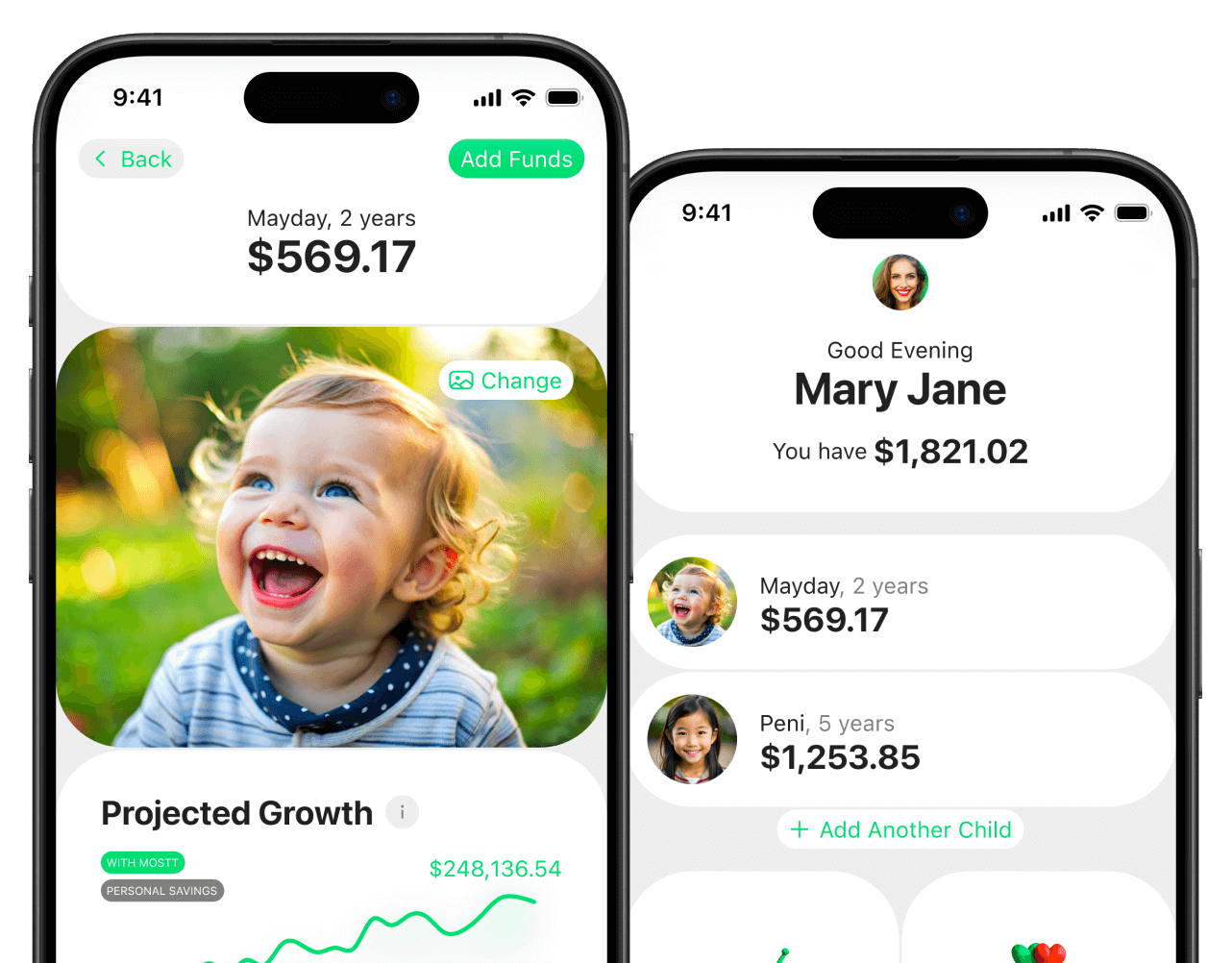If you’ve ever felt the stress of thinking about your family’s future, you’re not alone. Many parents wake up each day with the same question: “How can I make sure my kids have the opportunities I want for them?”
And yet, despite good intentions, most families overlook one of the most powerful tools available: family investing.
It’s not about day trading or trying to time the market. It’s about creating a system that grows wealth steadily, while teaching your kids lessons about money that will stick for a lifetime. And the best part? The earlier you start, the more dramatic the impact.
The Common Trap: Waiting for “The Right Time”
Let’s be honest: most families think they need to wait.
-
Wait until the mortgage is paid off.
-
Wait until the kids are older.
-
Wait until there’s “extra” money at the end of the month.
But here’s the hard truth: every year you delay is a year of missed growth. Money sitting in a regular savings account doesn’t just stagnate—it loses value over time due to inflation. Waiting to invest is like planting a tree but refusing to water it until next year. By the time you start, you’ve missed crucial growth that could have compounded quietly over the years.
Even small, consistent contributions started today can make a massive difference by the time your child reaches college or adulthood.
Why Family Investing Changes Everything
When you start investing as a family, it’s not just about money. It’s about creating habits, teaching values, and building security.
1. Setting your kids up for financial freedom
Imagine your child graduates from college without the burden of student loans, or has a head start on buying their first car, or even funding a gap year abroad. Investing early gives your kids options that don’t come with financial stress.
Financial freedom isn’t just about wealth—it’s about choice. By starting now, you give your children the freedom to pursue opportunities without the pressure of debt or limited resources. That head start can shape their entire adult life.
Tip: Even small monthly investments, like $25 or $50, can grow to thousands over a decade. It’s not the amount, but the habit that matters.
2. Teaching life lessons through action
Kids learn more from watching than hearing. When they see you invest regularly, discuss goals, and celebrate milestones, they internalize patience, responsibility, and delayed gratification—lessons that are difficult to teach in any classroom.
For example, sitting down with your child to show them their investment account and explaining how contributions grow over time helps them understand the real-world impact of decisions. It’s much more effective than lectures about “saving money.”
By including kids in financial decisions (age-appropriately), you make money a tool for learning instead of a source of anxiety.
3. Creating a safety net for unexpected challenges
Life is unpredictable. From medical emergencies to unexpected school fees, having an invested safety net creates flexibility and peace of mind.
Investing as a family isn’t just about building wealth—it’s about creating security. It’s about having a cushion that allows you to handle life’s surprises without derailing long-term goals.
Even a modest portfolio, growing steadily over 10–20 years, can provide financial breathing room for emergencies, reducing stress and giving your family more freedom to focus on experiences and relationships rather than finances.
4. Harnessing the power of compounding
Albert Einstein reportedly called compound interest the “eighth wonder of the world.” The magic of compounding is simple but powerful: your money earns money, and that money earns more money.
The longer you let investments grow, the more dramatic the effect. For example:
-
Start investing $50 a month for 10 years with an average annual return of 7% → grows to roughly $8,700.
-
Start the same $50 a month investment 10 years later → grows to only about $4,500 by the same endpoint.
The earlier you start, the more time compounding has to work for you. That’s why starting now is critical—even small contributions add up over time.
Getting Started Doesn’t Have to Be Overwhelming
Family investing sounds intimidating, but it doesn’t have to be. You don’t need a finance degree, a large paycheck, or insider knowledge. The key is starting simple and staying consistent.
Here’s a step-by-step guide for families:
Step 1: Open a custodial or trust account for your child
Custodial accounts let an adult (you) manage investments for a minor until they reach adulthood. There are two common types: UGMA (Uniform Gifts to Minors Act) and UTMA (Uniform Transfers to Minors Act). (NerdWallet)
With these, once the child hits the age of majority in their state (often 18–21), control shifts to them. (Fidelity)
These accounts are simpler than setting up a trust, and many brokerages support them. (wellsfargo.com)
Step 2: Start with low-cost ETFs or index funds
Rather than picking individual stocks, which can be risky and time-consuming, consider diversified funds like ETFs or index funds. These give broad market exposure, reducing risk while giving your money room to grow.
Choosing funds with low fees is essential — high expense ratios eat into long-term returns more than many people realize.
Step 3: Set a simple monthly contribution
You don’t have to make a huge contribution to make this work. Even $25–$50 a month can snowball into something meaningful over time. The key is consistency.
Tip: Automate your contributions so they happen without you having to think about them. Set it up once, and let the system run on autopilot.
Step 4: Include your kids in the process
One of the most powerful parts of family investing is turning it into a family activity. Show them how the account works, talk through goals (“Maybe this is for your college — or your first car!”), and celebrate when you hit milestones.
Let them pick a minor part of the portfolio (age-appropriate) or give them “ownership” by tracking how much their money has grown. That teaches responsibility, accountability, and excitement around growth—not fear.
The Mental Shift: From “I Can’t” to “We Can”
One of the biggest barriers to family investing isn’t money — it’s mindset. Many parents say, “I’m not rich enough to invest.” But here’s the truth: you don’t need to be rich to start.
It’s not the size of the investment; it’s the habit and time that make the difference. The most powerful investors are often those who are steady, not spectacular.
And the mental and relational benefits go beyond money:
-
Your kids learn money is a tool, not a burden.
-
You gain confidence knowing you’re laying foundations, not just paying bills.
-
Your family conversations shift from scarcity (“We don’t have enough”) to strategy (“What could we build together?”).
Think of it like a garden: small seeds planted consistently grow into something beautiful over time.
Real-Life Example: From Birthday Money to a Future Nest Egg
Meet Sara, a parent of two. She didn’t wait until she had “extra” money — she turned each child’s birthday cash into investments. At first, it was just $50 or $25 here and there.
She showed her children how their money was growing. Over time, those contributions compounded. Ten years later, their accounts had grown into something significant — enough to meaningfully contribute toward college or other big goals.
More than that, her children learned firsthand about investing, risk, and patience. They now understand money in a way many young adults don’t, and they feel a real sense of ownership over their future.
The Ripple Effect: Beyond Your Family
Family investing doesn’t just change your household — it creates a legacy.
When you model investing:
-
Your children are more likely to invest when they grow up.
-
They make informed financial decisions rather than guessing or learning the hard way.
-
They view money as a tool for growth, not just for spending.
By building wealth intentionally and teaching your kids the “why” and “how,” you’re not just investing money — you’re investing in a culture of financial literacy that could last for generations.
Overcoming Common Objections (With Facts)
Here are some common hesitations — and why they shouldn’t stop you:
-
“I don’t have enough money.”
Reality: Even very small contributions work. The goal is consistency, not size. -
“I don’t know much about investing.”
Reality: You can start with simple, low-cost index funds. Learn as you go — it’s a family journey. -
“The market is too unpredictable.”
Reality: Time in the market outweighs timing the market. A long-term, steady approach smooths out volatility. -
“Isn’t a 529 college savings plan better?”
Custodial accounts (UGMA/UTMA) are more flexible: you can invest in stocks, ETFs, and use the funds for non-education purposes once your child takes control. -
“What about taxes?”
UGMA/UTMA earnings are subject to the “kiddie tax,” but there are favorable thresholds. (Bankrate) -
“What happens when my child becomes an adult?”
Once they reach the age of majority (which depends on your state), they gain control of the account. (Benzinga) -
“Does this affect financial aid?”
Yes — custodial accounts are considered an asset of the child, which can impact FAFSA. (WTOP News)
Takeaway: The Best Time to Start Is Now
There will never be a “perfect” time. Life is messy. Bills come. Time is limited. But waiting for the perfect moment means giving up the most powerful wealth-building tool there is: time itself.
Family investing is about:
-
Building wealth steadily
-
Teaching your kids life-changing lessons
-
Creating security for the unexpected
-
Letting compounding work its magic
Start small. Start today. Your future self — and your kids — will thank you.
With tools like Mostt, families can begin investing with as little as $25 per month. It’s not just about growing money — it’s about growing your family’s future, together.




